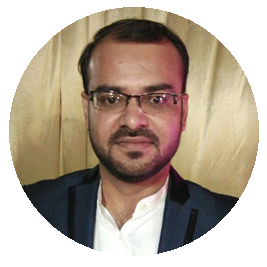Aakash Kumar Gupta
Odisha Power Generation Corporation , India
- Conference: Monitoring Combustion Gases
- Presentation: Monitoring technique and their suitability: Combustion gases including NOx, SO2, CO and C02
- Presentation Time: Thursday 15:20


Aakash Kumar Gupta has completed his graduation in Mechanical engineering (Hons) in 2010 from Raipur Institute Of Technology, Raipur (C.G).He has nine years of experience in commissioning and operation of super critical and sub critical thermal power plant. He has worked in Reliance Power, Lanco Power and Indiabulls Power after his graduation. His core expertization area's are power plant operation, commissioning. energy efficiency, energy conservation and DSM. Mail Id- aakashmech001@gmail.com. Digvijay K Thool has completed his graduation in power engineering in 2010 from NPTI, Nagpur. He has nine years of experience in power plant operation. His core specialization areas are power plant operation and energy efficiency with Essar Power, Jamnagar. At present both are working with Odisha Power Generation Corporation, Mail Id- thool.digvijay@gmail.com.
Indian pollution control board i.e. Central Pollution Control Board (C.P.C.B.) requires that special aggressive gases (i.e. NOx and SOx) must be monitored continuously. There are number of oxides of Nitrogen, including nitrous oxides (NO), nitrogen dioxide (NO2), nitrogen trioxide (N2O3) and nitrogen pentoxide (N2O5), that are referred to collectively as NOx. Monitoring of NOx for regulatory purposes requires various methods for concentrations measuring in the range i.e. 0- 200 mg/Nm³. These methods are referring either to standard methods or to acceptable one, with simple chemical and physical principles.
To evaluate the concentrations of the pollutants leaving the stack i.e. NOx and SOx, online monitoring of the stack becomes important for Thermal power plants. Online SOx and NOx monitors are used to meet environmental regulations, whereas CO and O2 monitoring helps industries maintain the air to fuel ratio, thus controlling the fuel consumption.
CO is highly corrosive & explosive gas. Plants operating under reducing oxygen produces higher CO gas. Hence, to protect the Electrostatic Precipitator (ESP) from explosion, online monitoring and maintaining CO to zero level became necessary for power plants.
During the combustion process, nitrogen in air oxidizes with oxygen and forms oxides of nitrogen i.e. NOx. Sulphur in coal after oxidation forms SO2. Similarly, coal after burning becomes ash i.e. dust. CO, SOx, NOx gases are highly toxic and are harmful to the environment. Hence, our environmental authority has mandated industries to install emission monitoring devices and provide real time emission data to the central servers installed at CPCB and State Pollution Control Board (SPCB) offices.
To fulfil this requirement, many industries prefer In-situ technology non-sampling type field mounted emission monitoring devices rather than continuing with the old maintenance prone hot extractive sampling type emission monitors.
Methods for Measurement and Monitoring of NOx & SOx:
The most commonly used methods are described, Continuous and Discontinuous methods, and between point measurements and remote sensing. After upgradation in design, construction of direct on-stack mounted analyzer became popular for continuous emission monitoring. The principles and methodology which are being commonly utilized for measurement of SOx and NOx are: